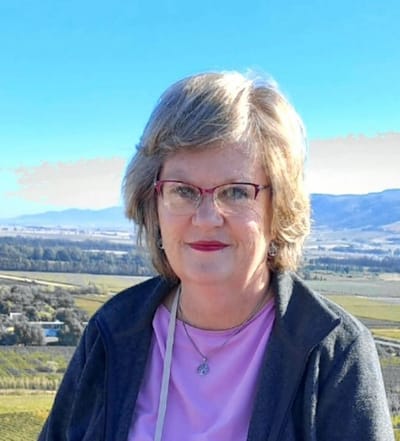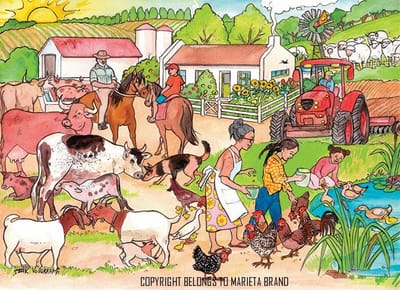How to teach Afrikaans successfully, using proven techniques and resources developed over many years by a foundation phase teacher
- Education is the most powerful weapon that you can use to change the world.
Nelson Mandela -
About



I also knew that young learners aged between 7 and 9 yrs old are not really able to use an ordinary dictionary successfully and therefore I had to come up with a plan. In 2005 I woke up one morning and I just knew that the solution would be to create a picture dictionary with the Afrikaans words linked to a picture or drawing explaining the word. This way, no matter what the home language of the learner was, he or she would be able to get the Afrikaans word by finding the picture of the word they were looking for. This is how "MY AFRIKAANSE WOORDEBOEK" was born. This picture dictionary proved to be a big success and myself and a number of Foundation Phase Teachers at other primary schools in the Western Cape have been using it with great success since 2005.
The next step was to develop "MY KLANKEBOEK". The concept is to use the sounding out of words to teach learners how to read by using the method of decoding. This also proved to be of great value to help the learners pronounce the Afrikaans words correctly, but something was still missing. Learners still struggled to get the word order right when speaking or writing in Afrikaans.
So, I developed a communicative program "KOMMUNIKATIEWE PROGRAM based on listening and speaking. How this works is as follows, the teacher will make a statement, for example, "This is a car, ... Dit is n motor, ...Wat is dit?" The learner will then repeat loudly, "Dit is n motor." To further help the learners, I got an artist to draw 24 beautiful pictures with different themes, lots of actions and different objects. There are 5 family members visible in most of these pictures. These pictures can be used digitally or as posters in the classroom to help the learners to link the Afrikaans words to the different actions and objects. I also developed three teacher's guides one for each of grade 1, 2 and 3. These guides help the teacher to say the Afrikaans word correctly so that the learners, as a class, can then repeat after the teacher. By doing it this way no learner is being put on the spot or embarrassed. This gives the learners more confidence because the opportunity is there to hear and speak within the group.
These three resources, used in combination, help learners to master the basics of Afrikaans in the Foundation Phase. It also makes it much easier for the teacher to achieve positive results.
HOW TEACHING AFRIKAANS CAN HELP YOU
Teaching learners at the foundation phase level an additional language, like Afrikaans, has its unique challenges. Most of the learners, who learn Afrikaans as first additional language, do not hear or speak the language at home. For that very reason they have a very limited, if any, vocabulary. Another challenge is that most of these learners also have both parents working a full day and do not get a lot of help with their homework.
Afrikaans, like any other language, is learned by;
- Hearing it spoken. This can be achieved in class by the teacher speaking Afrikaans to the learners during the Afrikaans classes. To help the teacher with this, I have developed the Afrikaans Communicative program, which helps the teacher to teach the learners how to pronounce the Afrikaans words, expand their vocabulary and learning to communicate by answering questions.
- Reading it. The learners are only starting to learn to read and at this stage they are naturally focused on reading their home language. To help them with their first additional language is where the "Afrikaanse Woordeboek" comes in very handy. The learner can find the Afrikaans word by finding the picture of the word he or she is looking for. These words are also numbered or in line, to help with reading together as a class with the teacher, which builds confidence. They can then see the word, it's spelling and make the association between the drawing and the word. At the back of the book words are grouped into parts of speech, which helps with the construction of sentences.
- Speaking it. Learners will be more comfortable to speak the language with confidence after going through the steps above. Always work around a theme, using the posters and the themes in the "Afrikaans Woordeboek".
- Writing it. Writing sentences and stories will be easy once they have built up a vocabulary. Working around a theme makes it easier because they will have enough vocabulary to work with.

Products

MY AFRIKAANSE WOORDEBOEK
My Afrikaanse Woordeboek is a premier Afrikaans picture dictionary for foundation phase learners. It provides fast, accurate Afrikaans words next to pictures that learners with other home languages can easily identify. The pictures are grouped in themes to help the learners find it easily... To purchase this book go to the "Store" page at the top of your screen.
Learn More
KLANKEBOEK(PHONICS BOOK)
Klankeboek vir Afrikaans addisionele taal. Geskik vir grade 2, 3 en 4. Phonics book for Afrikaans additional language. Suitable for learners in grades 1, 2 and 3... To purchase this book go to the "Store" page at the top of your screen.
Learn More
Kommunikatiewe Program Gr1, Gr2 of Gr3
Kommunikatiewe Program Gr1-3: Fun & interactive language program for early learners. Learn listening, speaking, and reading skills in an engaging environment... To purchase this program go to the "Store" page at the top of your screen
Learn More
Digitale Kommunikatiewe Program Gr1, Gr2 of Gr3
Digitale Kommunikatiewe Program Gr 1-3: The digital product is exactly the same as the Communicative Program for grades 1-3 but is sold as the individual themes. Each theme includes the poster with the audio and teachers guide for the specific theme of this program. Use this fun & interactive digital language program for early learners. They will learn by listening, speaking, and reading in an engaging environment. Available in individual themes and ready to use. To purchase the individual themes of this program go to the "Store" page at the top of your screen.
Learn MorePAY WITH SNAPSCAN

Snapscan Is easy and safe to use.
Just download the Snapscan app from Google play on to your cellphone. Register yourself on the app and then you can use the snapscan QR Code displayed next to or below on your screen and pay for your order. You can also copy this link https://pos.snapscan.io/qr/Sk2jw2_m and enter it in your browser. This will give you three options to make your payment. Please remember to use your name or invoice no as reference with your payment.
New Arrival
Main Categories
Contact
- Durbanville, Western Cape, South Africa
If you have any questions or would like to know more about our services, please use the form on this page and send us a short message. We will then contact you.